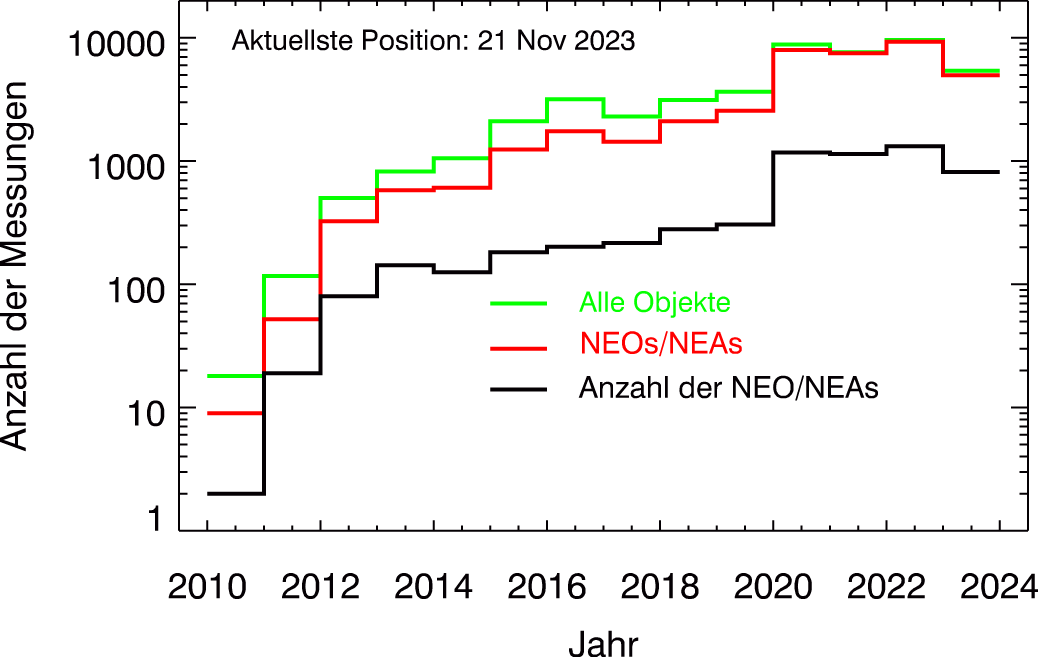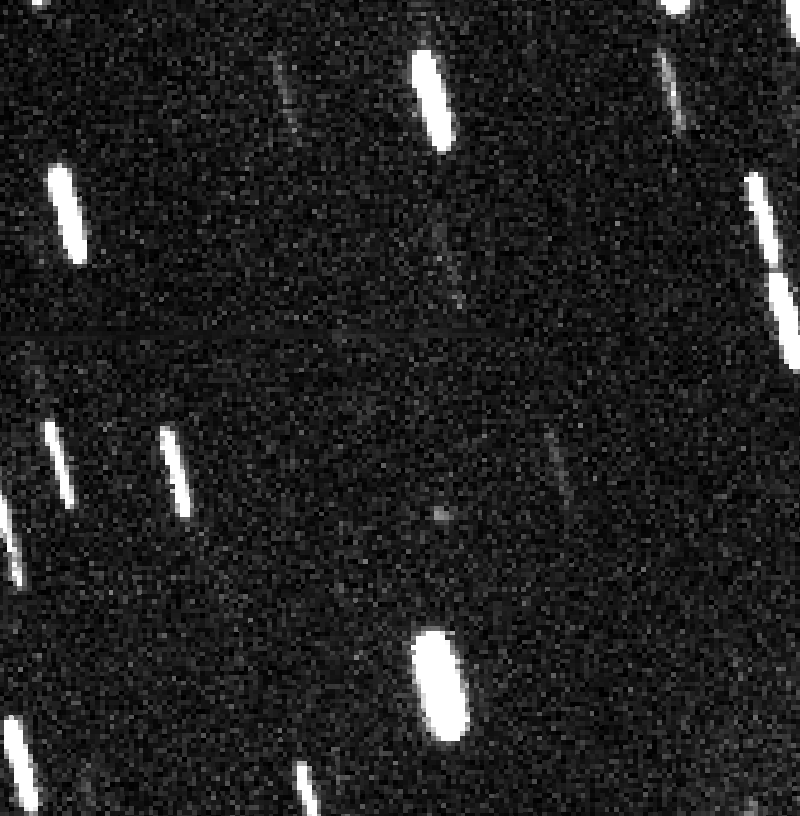In addition to the well-known planets, the solar system is populated by a huge number of smaller bodies, the minor planets or asteroids. Their size ranges from around 1000 km (Ceres) to a few meters, with smaller objects being much more common. Already in the early days of the observatory up to the 1990s, Dr. Freimut Börngen searched for and found asteroids on the photographic plates taken with the 2-m telescope. He made more than 500 discoveries of small planets located in the asteroid belt between Mars and Jupiter. He also made some observations of near-Earth asteroids, of which only a few were known at the time. These are minor planets whose closest distance to the Sun is less than 1.3 times the distance of Earth. They are called NEAs (near-Earth asteroids). Many of these objects cross Earth's orbit and therefore pose a collision risk. That is why special sky surveys were established to identify them as completely as possible.
The TLS has been involved in the classification and monitoring of NEAs since 2010. Further measurements of the celestial position of newly discovered and known near-Earth asteroids increase the accuracy of their orbits. This shows whether a new object is close to Earth or not, and whether the danger of a known one has decreased or increased. With more than 8000 annual measurements, the TLS is now the most productive observatory in Europe for this activity (Fig. 1). Since 2019, the NEA observations have been carried out in collaboration with the European Space Agency (ESA).
The large field of sky that the TAUKAM camera can observe on the 2-m telescope is advantageous for finding new NEAs. For some time now, there has been a method that increases the chances of discovery. Because asteroids move in different directions, they do not appear pointlike in long exposures and are therefore lost in the noise of the image. However, the superposition of many briefly exposed images, which have been shifted relative to one another at the appropriate distance and in the appropriate direction, makes them visible. However, since the appropriate shift and direction are not known in advance, many attempts must be made. 'Synthetic tracking' is therefore computationally intensive. We made the first attempts at this in spring 2022 together with the French amateur astronomer Christophe Demeautis, who is already using the method successfully. The analysis of the images immediately after they were taken revealed, in addition to many known objects, two candidates for near-Earth asteroids (Fig. 2). Further measurements in the following nights confirmed the classification. They were therefore added to the NEA list by the International Astronomical Union's Minor Planet Center with the designations 2022 SX7 and 2022 SK9. Five new NEAs were discovered during the fall 2023 campaign. In addition to continuing the NEA observations for classification and monitoring, the search for new NEAs with the 2-m telescope will also become a routine task.
 Fig.1: Statistics of TLS asteroid observations |
 Fig.2: Animated image of the movement of TLS0002/2022 SK9 relative to the stars. The asteroid has a diameter of approximately 50 m. |
Contact: Bringfried Stecklum

